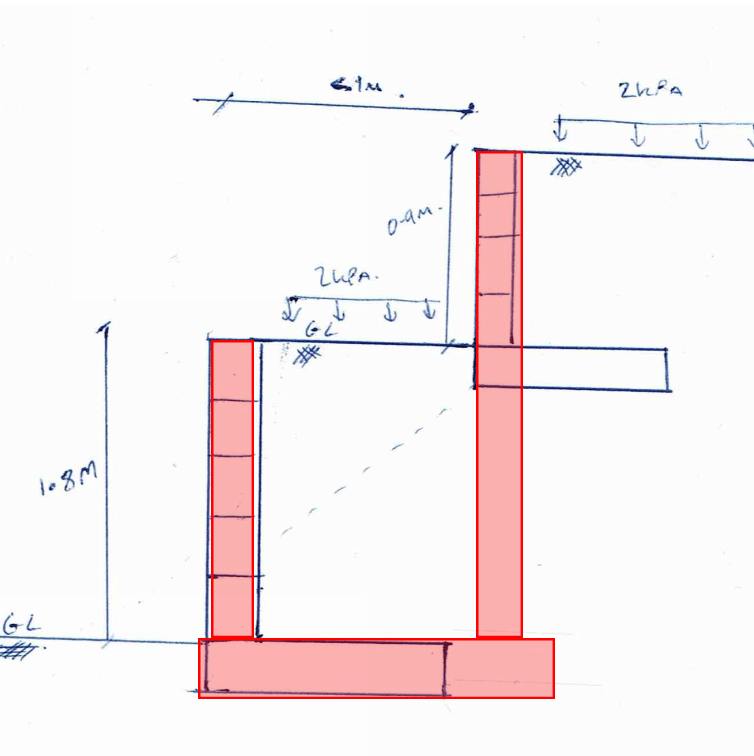Hi All,
I have two questions.
1) tiered retaining walls. Discussion in the office today yielded, the easiest way to analyse the tiered walls is to design the lower wall assuming it was retaining the full height. See sketch attached. This example has a lower wall height of 1.8m and a upper wall height of 0.9m, so design the lower wall for a retained height of 2.7m and design the upper wall for a retained height of 0.9m?
Is this overly conservative?
2) Same example as number 1, but what if the ground is falling away at 15 degrees. How would this change your design approach?
Thanks for your time.
I have two questions.
1) tiered retaining walls. Discussion in the office today yielded, the easiest way to analyse the tiered walls is to design the lower wall assuming it was retaining the full height. See sketch attached. This example has a lower wall height of 1.8m and a upper wall height of 0.9m, so design the lower wall for a retained height of 2.7m and design the upper wall for a retained height of 0.9m?
Is this overly conservative?
2) Same example as number 1, but what if the ground is falling away at 15 degrees. How would this change your design approach?
Thanks for your time.

